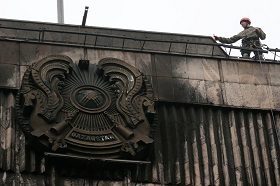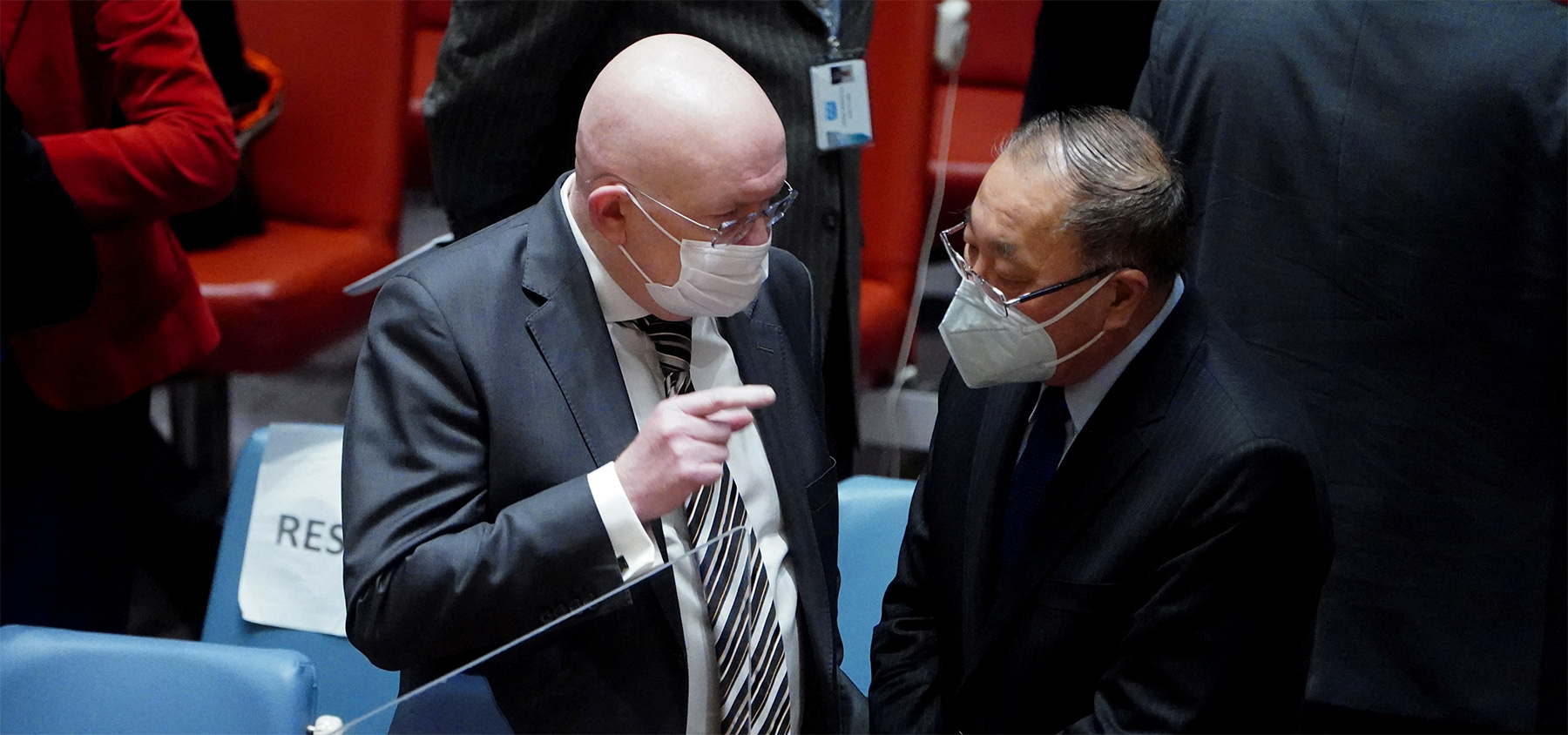The key economic contradiction between Russia and Kazakhstan is that Moscow wants to use the EAEU in general and Kazakhstan in particular to expand parallel imports and financial transactions amid international sanctions. At the same time, Nur-Sultan is not interested in expanding re-exports of sanctioned goods and equipment to Russia, for fear of secondary sanctions. It is more important for the country to maintain the existing volume of purchases of Russian goods and food, as well as to establish stable channels of supply of minerals to global markets.
For now and in the short term, Kazakhstan will have to tackle several challenges at once. First, there is the instability of the Caspian Pipeline Consortium as a key export channel, technological disruptions in its operation, real problems with the safe navigation in the Black Sea, as well as the planned increase of the Turkish side fees for passing through the Bosphorus and Dardanelles from October 7, 2022. Second, restrictions on exports of grain crops, mineral fertilizers, fuel, and some goods imposed by Russia and other countries will continue to push the prices up. Third, problems with payment for imports from Russia cannot be ruled out. Finally, the country is wanting large-scale investments to see the reconstruction and expansion of transport and logistics infrastructure, necessary to diversify its exports and increase transit facilities. All this will occur against the backdrop of the political transition, which should end with an early election of the president of Kazakhstan in autumn 2022 and the parliament of the country (the Majilis) in mid-2023. In a situation when the events of January 2022 are still strong in people’s minds and the decline in economic growth and living standards is acutely felt, the opportunities for successful implementation of the outlined plans are highly questionable.
Today, the global economy is being put to the test. The list of challenges includes the special military operation in Ukraine, large-scale anti-Russian sanctions, an aggravated food crisis, disruptions in global supply chains, and globally rising inflation. Changes have not spared Kazakhstan, a country forced to seek out its place amid the new, constantly changing conditions of the global economy. To understand how deeply the country is integrated into the global economy, it is worth taking a look at Kazakhstan’s foreign trade in 2021. On the one hand, data suggests that its foreign trade is distributed fairly evenly among the three major regions, namely Europe (31%), Asia (32.6%) and the CIS (32.7%). On the other hand, the situation would be very different when the structure of exports and imports is analyzed. Almost 80% of goods are exported from Kazakhstan to nations outside the former Soviet Union—that is, to Europe and Asia. At the same time, about 50% of imports come from the former Soviet republics—primarily, Russia—while another 20% of imports comes from China. In fact, Kazakhstan sells minerals to global markets, and—with the currency earned—the country buys consumer goods, electronics, machinery, equipment, food and building materials from its nearest neighbors. In other words, such imports feature everything necessary for life. This model appeared more than 20 years ago to become the basis of the “Kazakhstani economic miracle”, turning the nation into the second economy of the post-Soviet space. Within this model, the drivers of economic growth are exports of minerals and services, which redistribute imports and financial flows, and create the bulk of jobs in the formal and informal sectors of the economy.
Over the past 10 years, Russia’s share of Kazakhstan’s foreign trade has steadily been increasing, while that of the EU has been declining. In 2011, Russia and the European Union accounted for 18.4% and 40.8% respectively. By 2021, the share of Russia rose to 24.2%, while the same indicator for the EU shrank to 29.6%. Today, Russia emerges as Kazakhstan’s key trade partner. Thus, it accounts for more than 40% of Kazakhstan’s imports. In 2021, more than 70% of timber and forest products, pulp and paper products, metals and goods from them, more than half of building materials and food products, more than 40% of chemical products, and a quarter of the machinery, equipment and vehicles imported into Kazakhstan came from Russia.
Under these conditions, Kazakhstan’s main interest is to maintain and diversify exports to an extent possible, as well as to secure sustained imports of food and key consumer goods.
Let’s take a closer look at Kazakhstan’s exports. Minerals, primarily crude oil, form the basis of exports. According to the Ministry of Energy of Kazakhstan, oil exports from the Republic in 2021 amounted to 67.6 million tons. Almost 80% of Kazakhstan’s oil is exported through the Caspian Pipeline Consortium (CPC). The consortium connects Kazakhstan’s fields with the port in Novorossiysk, from where oil is shipped to tankers for delivery to consumers in Europe, the Middle East, as well as South and East Asia. In 2021, the pipeline carried 53.1 million tonnes of oil from Kazakhstan’s largest field, Tengiz (26.6 million tonnes), as well as from Kashagan (15.7 million tonnes) and Karachaganak (10.3 million tonnes).
Kazakhstan is one of the five largest oil suppliers to Europe. At the same time, Kazakhstan’s oil is mainly shipped to southern European countries—namely, Italy, Greece, and Spain. In the first half of 2022, against the backdrop of Russia’s special military operation in Ukraine, Kazakhstan’s exports to Europe rose to $18.8 billion, as compared with only $11.6 billion over the same period last year.
Kazakhstani oil is also transported through Transneft’s pipeline system, being mixed with Russian oil, for loading on tankers in Novorossiysk and the Baltic port of Ust-Luga. According to the Central Dispatch Center of the Fuel and Energy Complex of the Russian Ministry of Energy, the volume of Kazakh oil shipped in 2021 in Novorossiysk amounted for 7.1 million tons, and in Ust-Luga 5.9 million tons respectively.
Another export route for Kazakh oil is deliveries by tankers from the port of Aktau (the design capacity is 11.6 mln tons a year, but in fact much less is exported) to Baku, and then pumping raw materials through the Baku – Tbilisi – Ceyhan pipeline to Turkey and subsequent delivery by tankers to buying customers. Kazakhstan also supplies oil to China. Transportation is possible through the Atasu – Alashankou main oil pipeline with a capacity of 20 mln tons a year. According to KazMunayGas, the supplies through it amounted to 12 million tons in 2021, of which 10 million tons were transported under the equivalent circuit, when Russia supplies oil to Pavlodar refinery in Kazakhstan, and the Kazakh side sends the same amount of oil to China.
Kazakhstan is trying to find alternative routes for oil exports through Azerbaijan and Russia amid numerous CPC disruptions in 2022. On July 7, 2022, a meeting on the development of transport and transit capacity of the country was held under the chairmanship of President of Kazakhstan Tokayev. The meeting was attended by the leadership of the government, heads of relevant ministries and agencies, as well as national companies. President Tokayev said it was necessary to take a set of measures to ensure safe and uninterrupted exports of Kazakhstani products. At the same time, the country’s leader called the diversification of oil supplies the most important task. Moreover, the Trans-Caspian Route is a priority. KazMunayGas was instructed to work out the best option for its implementation, including the possible involvement of investors in the Tengiz project. While the government of Kazakhstan was tasked to take measures together with the Kazakhstani investment holding Samruk-Kazyna to increase the capacity of the Atyrau – Kenkiyak and Kenkiyak – Kumkol oil pipelines to expand supplies in the eastern direction.
On August 24, 2022, Kassym-Jomart Tokayev visited Azerbaijan to meet with President Ilham Aliyev. The meeting took place against the background of negotiations of the Kazakh state oil company KazMunayGas with the trading arm of the Azerbaijani state company SOCAR on the sale of additional 1.5 million tons of Kazakhstani oil through the pipeline from Baku to Ceyhan (port in Turkey) and 3.5 million tons through the pipeline to Supsa (port in Georgia). This agreement will soon be signed.
It is obvious that it will not be possible to significantly increase the volume of oil transportation in other directions in the short term, on account of the limited capacity that the existing infrastructure has. The port infrastructure of Aktau and the neighboring port of Kuryk on the Caspian Sea would need to be reconstructed to transport such a volume of oil. Nevertheless, a strategic decision was made to gradually reduce shipments through the CPC and increase oil exports using infrastructure in other ways. Besides, it becomes clear that there is a need to increase the potential of non-commodity exports, which can compensate, at least partially, for the losses from the unstable operation of the consortium.
On the other hand, a threat to stable economic growth lies in the severe restrictions that international sanctions against Russia and reciprocal restrictions from the Russian side pose to Kazakhstan’s most important source of imports.
The military operation in Ukraine and anti-Russian sanctions imposed since the beginning of the year have led to disruptions in supply chains, exacerbating the global food crisis. Worldwide, food prices are skyrocketing. Climate change is no less of a threat to food security—heat wave and prolonged drought in Europe and China, floods in Pakistan.
The external environment has a rather grave impact on Kazakhstan’s economy. Alongside difficulties with exports, the country is experiencing problems with the purchase of basic goods, primarily food. One of the main problems is the global food crisis, followed by global price increases and shortages of goods. This summer, the deficit of some, such as sugar, has been notable. Export restrictions on sugar, wheat, flour, sunflower, large and small cattle, which were imposed in the spring and summer of 2022, are only effective in the short term. A systemic solution to food security in Kazakhstan requires comprehensive development of the country’s agro-industrial complex and its productivity. However, dependence on supplies of seeds and mineral fertilizers from Russia, which accounts for 80% of all imports of these products, stands in the way of transformation of agriculture in Kazakhstan.
After Russia imposed a temporary ban on the export of crops from March 15, 2022, the sowing campaign in Kazakhstan was jeopardized, as seeds were needed by Kazakhstani farmers for variety renewal and variety change. Only after the problem was raised at the level of deputy prime ministers in early April 2022 did Russia lift the temporary ban on exports of wheat, rye, barley, and corn seeds to the EAEU countries.
The fact that Russia imposed quotas on the export of mineral fertilizers, and later suspended their shipment for export due to logistical problems in the first half of 2022, also had a negative impact on agriculture in Kazakhstan. At an expanded government meeting held on July 14, 2022, President Kassym-Jomart Tokayev pointed to the critical dependence on imported mineral fertilizers, noting that the country needs to engage in the production of phosphate and potash fertilizers. This will reduce their import from abroad, primarily from Russia.
The key economic contradiction between Russia and Kazakhstan is that Moscow wants to use the EAEU in general and Kazakhstan in particular to expand parallel imports and financial transactions amid international sanctions. At the same time, Nur-Sultan is not interested in expanding re-exports of sanctioned goods and equipment to Russia, for fear of secondary sanctions. It is more important for the country to maintain the existing volume of purchases of Russian goods and food, as well as to establish stable channels of supply of minerals to global markets.
***
For now and in the short term, Kazakhstan will have to tackle several challenges at once. First, there is the instability of the Caspian Pipeline Consortium as a key export channel, technological disruptions in its operation, real problems with the safe navigation in the Black Sea, as well as the planned increase of the Turkish side fees for passing through the Bosphorus and Dardanelles from October 7, 2022. Second, restrictions on exports of grain crops, mineral fertilizers, fuel, and some goods imposed by Russia and other countries will continue to push the prices up. Third, problems with payment for imports from Russia cannot be ruled out. Finally, the country is wanting large-scale investments to see the reconstruction and expansion of transport and logistics infrastructure, necessary to diversify its exports and increase transit facilities. All this will occur against the backdrop of the political transition, which should end with an early election of the president of Kazakhstan in autumn 2022 and the parliament of the country (the Majilis) in mid-2023. In a situation when the events of January 2022 are still strong in people’s minds and the decline in economic growth and living standards is acutely felt, the opportunities for successful implementation of the outlined plans are highly questionable.







